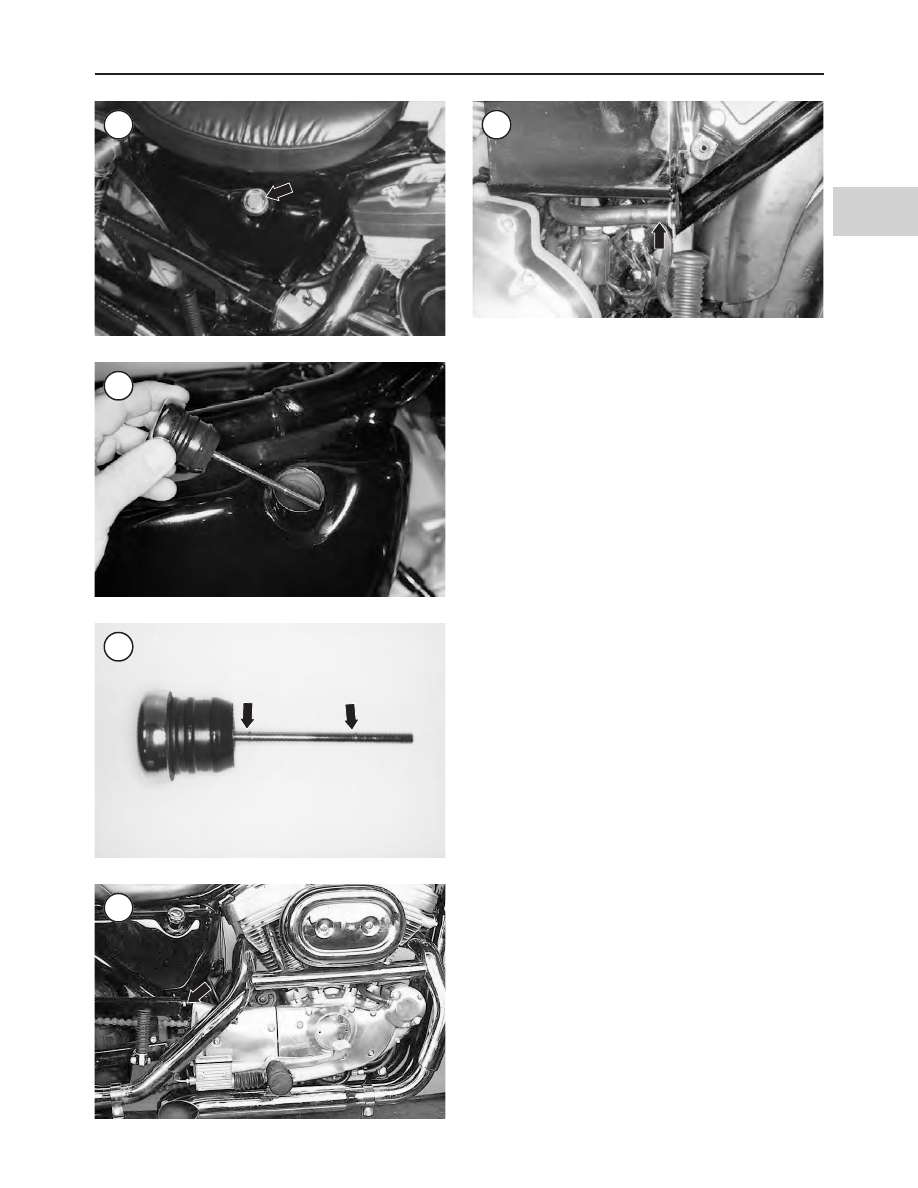Harley Davidson 1986-2003 XL/XLH Sportster. Service Manual - page 13

Engine Oil and Filter Change
Table 1 lists the recommended oil and filter change inter-
vals for motorcycles operated in moderate climates. If the
motorcycle is operated in heavy dust, mud, water or other
conditions, the oil should be changed more frequently.
The manufacturer recommends using Harley-Davidson
oils. If not available, the manufacturer recommends using oil
certified for use in diesel engines. Acceptable certifications
include: CF-4, CG-4, CH-4 and CI-4. Follow the viscosity
recommendations applicable to Harley-Davidson oil.
Always use the same brand of oil at each change. Refer to
Table 3 for the correct oil viscosity to use in anticipated ambi-
ent temperatures, not engine oil temperature. Using oil addi-
tives is not recommended as they may cause the clutch to slip.
WARNING
Contact with oil may cause skin cancer. Wash
oil from hands with soap and water a soon as
possible after handling engine oil.
CAUTION
Do not use the current SH and SJ rated auto-
motive oils in motorcycle engines. The SH
and SJ rated oils contain friction modifiers
that reduce frictional losses on engine com-
ponents. Specifically designed for automotive
engines, these oils can damage motorcycle
engines and clutches.
1. Run the motorcycle until the engine has reached normal
operating temperature. Turn the engine off and allow the oil
to settle in the oil tank. Support the motorcycle so that the
oil can drain completely.
2. Wipe the area around the oil filler cap (Figure 5) with a
clean rag. Remove the cap by pulling up.
3. Locate the oil drain hose.
a. On 1986-1990 models, the oil drain hose extends
from the bottom of the oil tank (Figure 8).
b. On 1991-1993 models, the drain hose (Figure 9) is se-
cured to the battery tray lug on the left side of the
motorcycle.
c. On 1994-2003 models, the drain hose is secured to a
lug on the rear muffler mount on the left side of the
motorcycle (Figure 10).
LUBRICATION, MAINTENANCE AND TUNE-UP
117
3
5
6
7
8
9